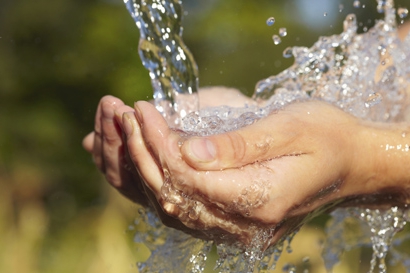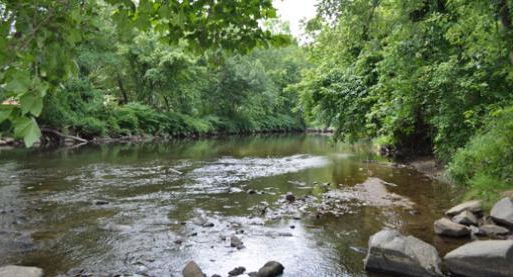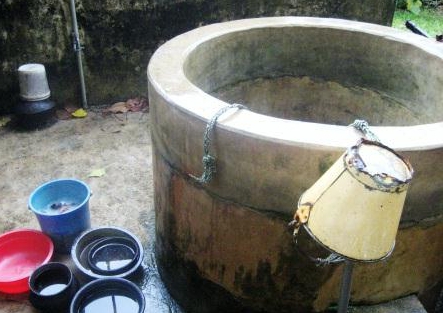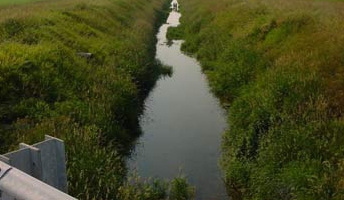Water tax refers to those types of mandatory payments to the budget that are determined by the specifics of the taxpayer. This article describes the principles of formation tax rate as well as the procedure for calculating the amount of tax.
Who should pay it
This tax came into effect on January 1, 2005, thereby replacing a fee called “payment for the use of water bodies”. Water tax is now described in a separate chapter 25.2 of the Tax Code of the Russian Federation, and in accordance with the norms of this chapter, organizations and individuals who use water under special or special conditions pay such tax.
Special water use is when technical means, structures or devices are used.
If legal entities or individuals have concluded an agreement on the use of an object after the entry into force of the Water Code of the Russian Federation (after January 1, 2007), then they do not pay water tax. A separate fee similar to the rent is taken from them.
Which objects are taxed by water
The tax code defines the cases when this tax should be levied:
- If water is taken from water bodies.
- If water areas of objects are used (timber rafting is not included in this category).
- If water bodies are used without water withdrawal for the electric power industry.
- If water bodies are used for rafting.
Not only do you have to pay tax on the relevant activities in the above cases, you also need to obtain a license.

In which cases water tax is not taken
The Tax Code has established water uses for which water tax is not calculated. Taxation is not carried out if:
- Thermal water or water is drawn, which includes minerals, medicinal mineral substances.
- A fence is being made for fire safety, the elimination of accidents and natural disasters.
- Water bodies are used for defense and state security needs.
- Reproduction fence biological resources including for fish farming.
- Water bodies are used for monitoring by state bodies of natural resources.
- Water areas are used for hydraulic structures of various economic purposes.
- Water areas are used for organized recreation for children, disabled people and veterans.
- Water is being drawn for irrigation of agricultural lands and personal farmsteads, and poultry and livestock of citizens and agricultural organizations are served.
- Water areas are used for hunting and fishing, etc.
This list is closed; that is, there can be no additions to it.
Tax period and tax base
Calculating water tax period reporting should be taken equal to three months (quarter). Based on the results of activities for this tax period, in addition, a declaration is submitted to the inspection.
The tax base here is highly dependent on the type of water use: it should be determined for each object. Here are some features of this procedure.
If water is taken, then the tax base is the amount of water withdrawn from the reservoir during the tax period. To determine the magnitude of the flow, measuring instruments are most often used: they give the highest accuracy. Indications in this case are entered in special journals of primary accounting.
Less accurate is the way in which the water tax is calculated on the basis of the productivity of the technical means of the fence and the duration of their work.
If it is impossible to use the above methods, it remains to determine the flow rate based on water consumption standards.
- If water areas of objects are used (without timber rafting), then the tax base should be defined as the area of this water area. This indicator is determined simply: either the data of the technical documentation for the facility or the information from the license are taken.
- If the water tax object is used without water withdrawal for the electric power industry, then the tax base is the amount of electricity generated during the tax period.
- If water bodies are used for rafting, then the tax base is calculated. It is a product of the volume of fused wood for the tax period (in thousand cubic meters) and the distance over which this forest was rafted (in km), divided by 100.
The calculation of tax is carried out independently by each organization or individual entrepreneur. There is no provision for charging at the tax office, as is the case with property taxes.

How tax is calculated
The rate on water tax cannot be uniform for all circumstances, since the conditions for collecting tax are completely different. The rates are prescribed in Article 333.12 of the Tax Code of the Russian Federation.
When water is taken, it is measured in rubles per 1 thousand cubic meters. m and has a two-layer structure: at first it was established for economic regions, and inside such regions - in accordance with the basins of lakes and rivers. Sea water also has a different cost - it all depends on the location of the sea.
When using the water area, the tax rate is measured in thousand rubles per 1 square kilometer and also depends on the economic region.
When taking water for the electric power industry, the rate is measured in rubles per 1 thousand kWh, for timber rafting - in rubles per 1 thousand cubic meters. m of fused wood per 100 km. In both cases, rates vary depending on the seas, lakes and river basins.
It is important that the water tax rate is set for the year. This means that when determining the amount of payment for a quarter, it will be necessary to calculate it as a percentage of the amount of annual tax.

Limits and benefits
Water tax has one feature: in some cases, water withdrawal limits are set for taxpayers. They can be determined by another legislative act - the Water Code, or they can be established by local authorities separately for a specific user.
As long as the organization or individual manages to stay within this framework, the tax is determined according to the usual formulas described in this article. But as soon as the limits are exceeded, the calculation of the water tax for the difference will have to be carried out with a rate increased by 5 times.
There are water tax benefits, but very few. For example, the water supply of the population allows the organization providing such services to citizens, to pay for 1 thousand cubic meters. m less than the fence for their own needs. In fact, this norm cannot even be called a privilege - just another type of use of resources.
The business practice of Russian entrepreneurs has shown that in most cases it is more profitable to use water spaces on the basis of lease agreements, rather than on the basis of property rights. With lease relations, there is less responsibility for their safety, and significantly lower fees for the use of resources. As a result, the taxpayer reduces his tax burden.
Reporting appears
The calculation of the water tax is simple: you need to multiply the tax base by the tax rate for this type of activity. Each taxpayer must make the calculation independently, since the inspection of notices, as in the case with land and property taxes, does not send.
The calculation also contains a water tax declaration, which should be submitted no later than the 20th day of the month following the reporting quarter. For example, for the first quarter, it must be surrendered before April 20, etc., to the tax inspectorate responsible for the taxable item.

When to pay tax
It should be borne in mind that the payment of water tax by the deadline coincides with the final filing date of the declaration - the 20th day of the month that goes after the next tax period - the quarter. Therefore, reporting must be submitted by the 20th of the day so that there is no unwanted overlapping of deadlines.
Taxpayers are not forbidden to carry out several types of water use, combining them. However, the tax must be paid at the designated time as a single amount, and all differentiation by type should be reflected in the tax return.
What tax is paid on water vehicles
The term "tax on water transport" is a derivative expression from the usual transport tax, the principles of application of which are defined in Chapter 28 of the Tax Code. In this chapter, water vehicles are mentioned separately along with motor vehicles and aircraft. A prerequisite for taxation is the legal registration of a vehicle. Payers of this tax are individuals and organizations that own a taxable item.
Water transport tax is calculated on the following principles:
- If the vehicle has an engine, the horsepower of this engine is determined as the tax base.
- If the vessel is a towed type - tonnage.
- If neither one nor the other is the vehicle itself.
The tax period is the year.
This tax applies to regional payments, so its rates are set by local authorities and contain many benefits for different categories of taxpayers. The federal center sets only the framework beyond which it is impermissible to go.
